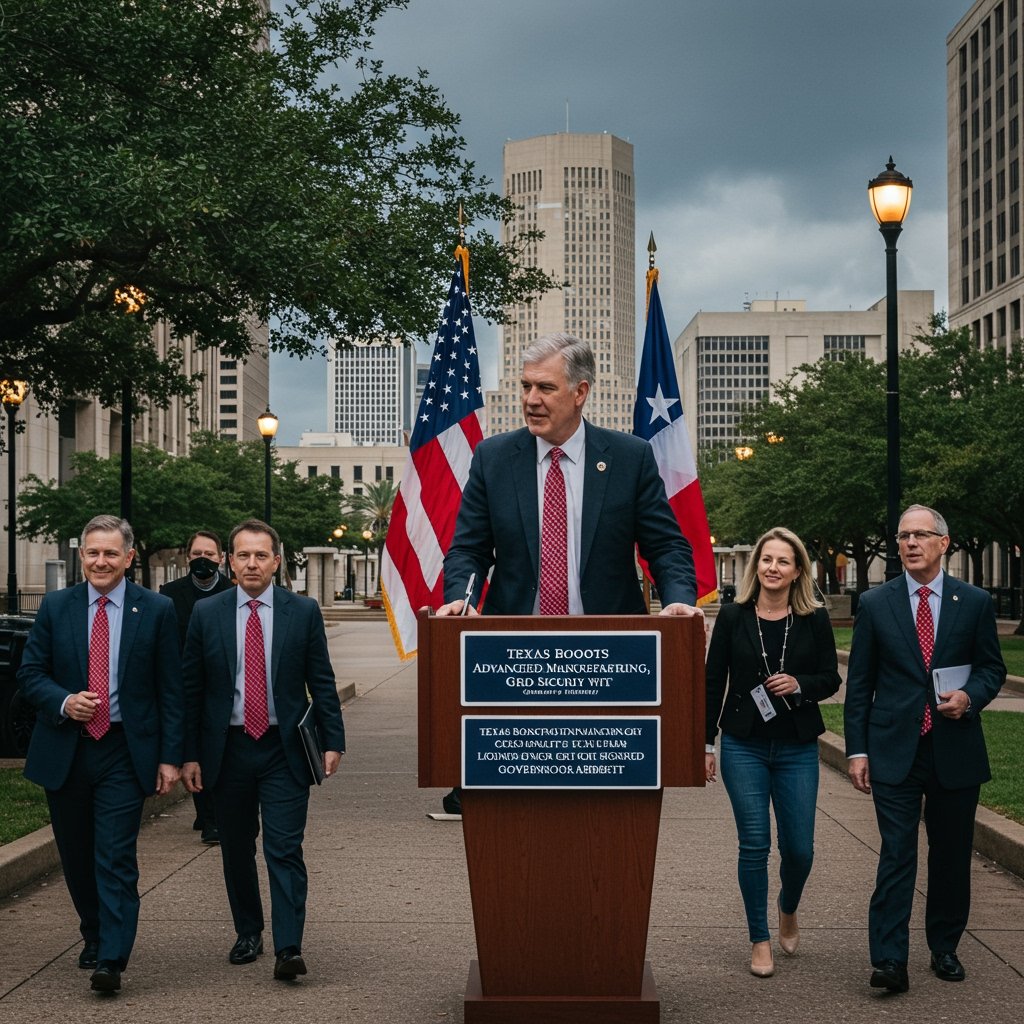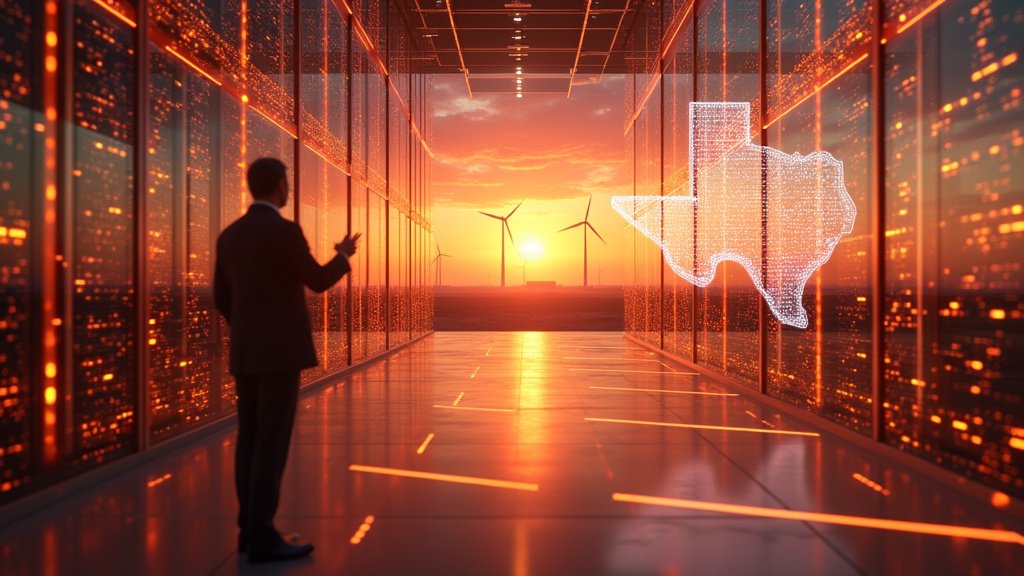Governor Abbott Enacts Key Economic and Infrastructure Legislation
AUSTIN, TX – On April 15, 2025, Texas took a significant step towards solidifying its position as a national leader in technological innovation and energy independence with Governor Greg Abbott’s signing of the Texas Economic Resilience Act (HB 123) into law. The signing, which followed the bill’s successful passage during the 89th Legislative Session, marks the implementation of a comprehensive strategy designed to attract substantial private sector investment into key industries and critical infrastructure projects across the state.
Authored and championed through the legislative process, HB 123 introduces a suite of targeted economic development tools, primarily focusing on new tax abatements and dedicated infrastructure grants. These incentives are strategically designed to lower the cost of doing business for companies in high-growth sectors and provide necessary funding for upgrades to the state’s vital energy grid.
Strategic Investment Targets: Manufacturing and Energy Grid
The core objective of the Texas Economic Resilience Act is dual-pronged: to spur rapid growth in advanced manufacturing capabilities within Texas and to enhance the reliability and security of the state’s energy infrastructure. State officials and economic analysts have projected ambitious outcomes from the legislation, estimating that HB 123 will stimulate over $10 billion in private sector investment over the next five years. This influx of capital is expected to translate directly into significant economic expansion and job creation.
The focus on advanced manufacturing specifically targets sectors poised for substantial future growth and strategic importance. Primary among these are semiconductor production and battery technology. The global demand for semiconductors, the foundational components of modern electronics, continues to rise dramatically. By incentivizing domestic production, Texas aims to attract major chip manufacturers, creating high-skill jobs and securing a critical supply chain element within the state. Similarly, the push for battery technology investment aligns with the growing electric vehicle market and the need for advanced energy storage solutions, further positioning Texas at the forefront of future energy landscapes.
Crucially, the bill also allocates resources towards critical energy grid upgrades. The resilience and reliability of the Texas power grid have been subjects of intense focus following past challenges. HB 123’s infrastructure grants are earmarked to support projects that strengthen grid capacity, enhance transmission, and integrate new energy technologies, aiming to ensure a more stable and secure power supply for residents and industries alike.
Projected Economic Impact: Jobs and Growth
The economic projections associated with HB 123 are substantial. Beyond the estimated $10 billion in private investment, the legislation is anticipated to generate upwards of 50,000 new high-wage jobs across Texas within the next five years. The emphasis on high-wage jobs underscores the state’s commitment to fostering a highly skilled workforce and providing lucrative career opportunities for Texans, particularly in the specialized fields of advanced manufacturing and energy technology.
These job creation figures represent a significant boost to the state’s labor market, attracting talent and providing economic security for thousands of families. The nature of the targeted industries means these jobs will likely encompass a wide range of roles, from highly trained engineers and technicians to skilled production line workers and support staff, creating a diversified economic benefit.
Mechanisms for Resilience and Growth
The primary tools embedded within HB 123 are the targeted tax abatements and infrastructure grants. The tax abatement provisions offer companies in the qualifying sectors relief from certain state or local taxes for a specified period, making Texas a more attractive location for large-scale capital investments required for facilities like semiconductor fabs or battery Gigafactories. These abatements are designed to be performance-based, often tied to investment levels, job creation targets, and wage standards, ensuring that the public benefit is commensurate with the incentive provided.
The infrastructure grants provide direct funding to support necessary developments that enable these large projects or strengthen the state’s underlying infrastructure. This could include funding for utility connections, road improvements, or direct investment in grid resilience projects. By addressing potential infrastructure bottlenecks, the state makes it easier and faster for companies to establish or expand operations, further accelerating the pace of investment and job creation.
Legislative Context and Future Outlook
The passage of the Texas Economic Resilience Act during the 89th Legislative Session highlights the bipartisan recognition of the strategic importance of strengthening Texas’s economic base and critical infrastructure. The bill underwent rigorous debate and refinement, ultimately gaining the necessary support to reach the Governor’s desk.
Governor Abbott’s signing ceremony on April 15, 2025, formalized the state’s commitment to this new economic development strategy. Officials expressed optimism about the bill’s potential to not only attract new businesses but also encourage existing Texas companies in related sectors to expand their operations within the state.
The implementation of HB 123 is expected to roll out over the coming months, with state agencies working to establish the necessary application processes and guidelines for the tax abatements and infrastructure grants. The economic outcomes will be closely monitored, with the state aiming to meet or exceed the projected $10 billion investment and 50,000 high-wage jobs over the next five years, positioning Texas for continued prosperity and technological leadership.






